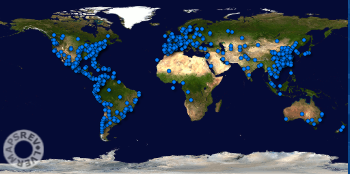In April 2021, the Center’s Director, Dr. Xun Luo, and other members of the San Diego Sight team met to discuss how to deal with the new coronavirus that is currently infecting the world, and at the meeting, the Center’s Director, Dr. Xun Luo, shared a presentation ——”COVID-19 Infection Prevention: An Interactive Digital Training Tool” project.

Dr. Xun Luo and the San Diego SIGHT Group – “COVID-19 Infection Prevention: An Interactive Digital Training Tool.” The proposal was accepted because of its clear connection to the COVID-19 response, and potential to address a need in the local community. With the support of IEEE SIGHT, Dr. Luo and his team created an interactive training tool that educates students on COVID-19 virus infection prevention and mitigation.
The project was successfully implemented, deployed, and used in San Diego, California in the United States. However, its reach has spread extensively to also benefit communities worldwide in English, Spanish, and Chinese-speaking regions. At the time this article was written, more than 20,000 students in more than forty schools are using the training tool to learn about COVID-19 prevention and mitigation.
General public awareness and practices in infection prevention are very important, in addition to measures taken by the government and health management agencies, including and not limited to quarantine, mass gathering restriction, and close of schools. For school children, it is imperative that they understand and practice the public health guidelines well. Children have contact with family members more than everyone else, be it at the breakfast table, at the reading table, or at bedtime for night stories. They also tend to explore the world with more curiosity than adults. Children like to play, and with that in mind, the San Diego SIGHT group designed their interactive training tool to be like a series of games that school children can play to demonstrate multiple scenarios of COVID-19 infection hazards. The play is challenged with practicing prevention guidelines correctly to avoid getting and spreading the virus.

The project lead, Dr. Luo, shares, “We conceived the idea of the project during early stages of COVID-19 development, back in February 2020. Staff of five school districts in the San Diego metropolitan were called, inquiring advice for school kids’ awareness education and potential preventative measures. We were encouraged with various comments and suggestions, and along with project execution we had always been on top of situation development. An email with online survey questions were sent to school principals, superintendents, and teachers. We got numerous feedbacks on the importance of this project and design suggestions. We have also surveyed parents to invite their comments from prospective user point of view.”
During the project’s implementation, the team faced challenges that they had not accounted for. This led to the project taking more time than planned to accomplish. Firstly, COVID-19 impact to the society was far deeper than anyone could have estimated. Many federal and local restriction measures created additional challenges for the team’s collaborative work. The other unexpected factor was that guidelines from CDC, WHO and local health agencies have changed quite often. Lastly, public opinions on COVID-19 handling measures are deeply divided, forcing the team to consider as much acceptance risks as they could and embody such considerations in the training tool.
Thankfully, the team was able to address the challenges faced and achieve both of their planned objectives. They released the training tool in web, desktop, and mobile app-based versions, and made it freely available to school children of the San Diego metropolitan area. The project also attracted IEEE members who offered valuable help to adapt the training tool to more international environments. A member of the team, Dr. Claudia Liliana Zúñiga-Cañón from Universidad Santiago de Cali in Cali, Colombia, led her laboratory group to build a version more suitable for Latin America users. Two Ph.D. students, Mr. Minhong Dai and Ms. Qinlei from China joined the team in July 2020, and contributed to the codebase as well as digital assets. Dr. Luo shares, “Geographical distribution of this training tool is much wider than what we originally planned. It is currently used by more than 40 schools in United States, Colombia, Ecuador, Argentina, Peru and China.”



